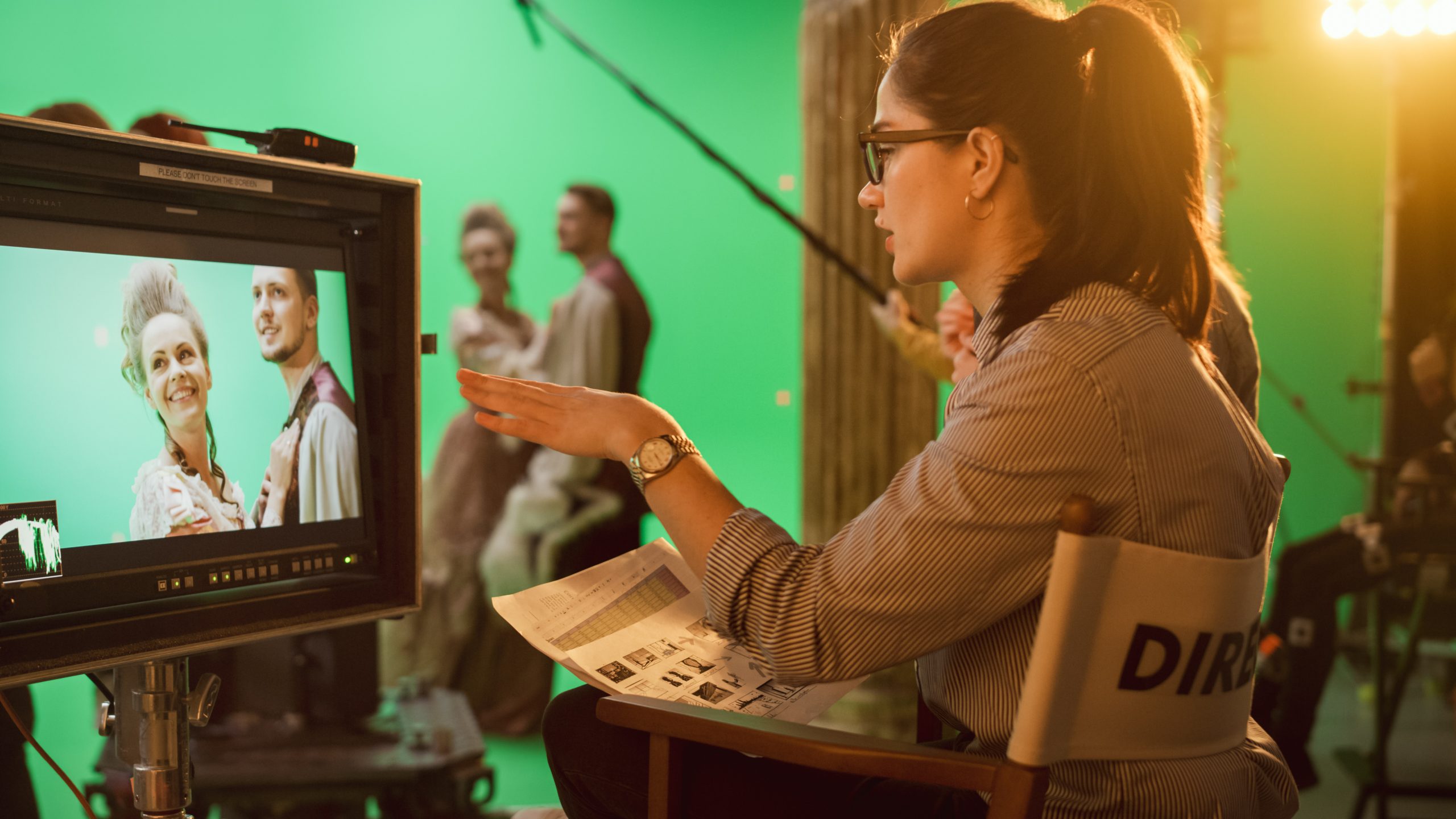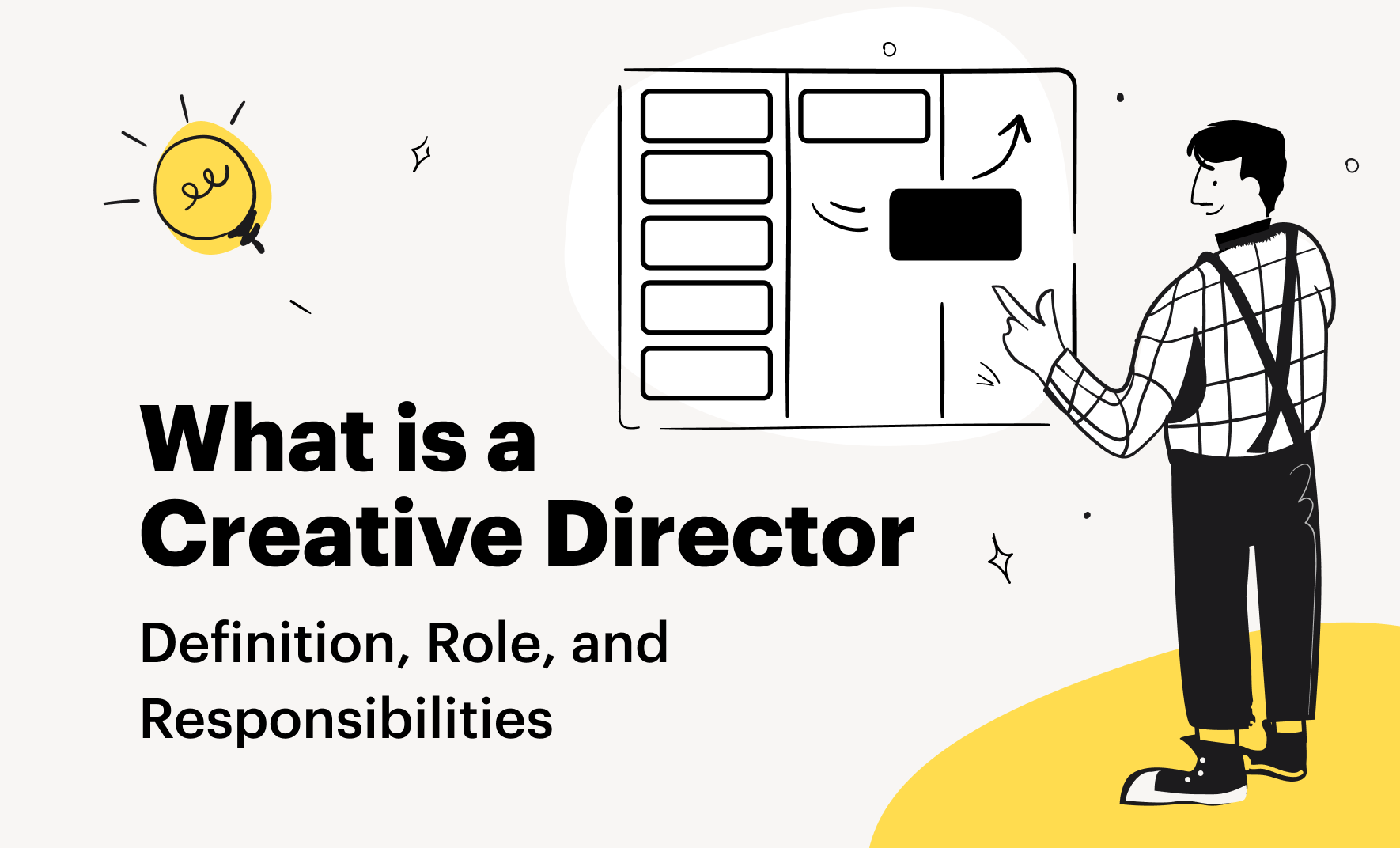Creative director jobs are at the heart of shaping brand identities, driving innovation, and captivating audiences. These visionary leaders play a pivotal role in guiding creative teams, establishing brand aesthetics, and ensuring that every project aligns with the company’s mission and values.
In this comprehensive guide, we’ll explore the multifaceted world of creative director jobs, covering everything from the responsibilities and skills required to the career path and industry trends. Whether you’re an aspiring creative director or simply curious about this fascinating field, this guide will provide you with valuable insights and actionable advice.
Job Description and Responsibilities
Creative Directors play a pivotal role in shaping the visual and conceptual identity of brands and organizations. They oversee the development and execution of creative strategies, ensuring that all visual elements align with the overall brand message and objectives.
Their responsibilities encompass a wide range of projects and initiatives, including:
- Developing and implementing creative campaigns across various channels, including print, digital, and social media.
- Managing creative teams and collaborating with other departments, such as marketing and sales.
- Conceptualizing and executing brand identity, including logos, color palettes, and typography.
- Creating and overseeing the production of marketing materials, such as brochures, advertisements, and website design.
Skills and Qualifications
To excel in this role, Creative Directors require a combination of technical skills, creativity, and leadership abilities. Key qualifications include:
- A strong portfolio showcasing exceptional design and conceptualization skills.
- Experience in managing and leading creative teams.
- Proficiency in industry-standard design software, such as Adobe Creative Suite.
- Excellent communication and presentation skills.
- A deep understanding of marketing principles and consumer behavior.
Industry Trends and Evolution: Creative Director Jobs
The role of Creative Directors has undergone a significant transformation in recent years, driven by the rapid evolution of technology and the increasing digitization of the creative industry.
The advent of digital tools and platforms has empowered Creative Directors with new ways to express their creativity and connect with audiences. Digital technologies have enabled the creation of immersive and interactive experiences, personalized content, and real-time engagement with customers.
Impact of Technology and Digitalization
- Emergence of new digital platforms:Social media, mobile apps, and virtual reality have created new channels for creative expression and audience engagement.
- Personalized content:Data analytics and artificial intelligence (AI) enable Creative Directors to tailor content to specific audience segments, delivering highly relevant and engaging experiences.
- Real-time engagement:Social media and other digital platforms allow Creative Directors to interact with audiences in real-time, fostering a sense of community and driving brand loyalty.
Emerging Trends and Innovations
- Cross-disciplinary collaboration:Creative Directors are increasingly collaborating with professionals from diverse fields, such as technology, data science, and marketing, to create innovative and effective campaigns.
- Sustainability and social impact:Consumers are becoming increasingly conscious of the environmental and social impact of products and services. Creative Directors are responding by creating campaigns that promote sustainability and social responsibility.
- Artificial intelligence (AI):AI is transforming the creative process, enabling Creative Directors to automate repetitive tasks, generate new ideas, and create personalized content.
Career Path and Advancement
The career progression for Creative Directors typically involves starting as a junior-level designer or art director, then progressing to a senior-level position before becoming a Creative Director. With experience and success, Creative Directors can advance to leadership roles such as Executive Creative Director or Chief Creative Officer.
Networking, mentorship, and professional development are crucial for career advancement in this field.
Networking
Networking is essential for Creative Directors to connect with industry professionals, stay informed about trends, and find new opportunities. Attending industry events, joining professional organizations, and reaching out to potential mentors can help build a strong network.
Mentorship
Mentorship can provide Creative Directors with guidance, support, and advice from experienced professionals. Finding a mentor who can share their knowledge and insights can be invaluable for career growth.
Professional Development
Continuous professional development is essential for Creative Directors to stay up-to-date with industry trends and best practices. Attending workshops, taking courses, and reading industry publications can help expand their skills and knowledge.
Collaboration and Communication

Effective collaboration and communication are essential for Creative Directors to succeed. They must work closely with other stakeholders, such as marketing teams, product managers, and engineers, to ensure that creative projects align with business goals and user needs.
Creative Directors must also be able to communicate effectively with clients to manage expectations and deliver exceptional results. This includes providing regular progress updates, establishing clear communication channels, and fostering open feedback loops.
Benefits of Effective Collaboration and Communication
- Improved project outcomes
- Increased client satisfaction
- Stronger team relationships
- Enhanced creativity and innovation
Key Principles of Effective Collaboration and Communication
| Principle | Description |
|---|---|
| Transparency | Share information openly and regularly with all stakeholders. |
| Respect | Value the perspectives and contributions of others. |
| Trust | Build strong relationships based on mutual trust and understanding. |
| Feedback | Provide and receive feedback regularly to improve communication and collaboration. |
| Accountability | Take ownership of responsibilities and hold others accountable for their contributions. |
Sample Email for Managing Client Expectations
Dear [Client Name],
I hope this email finds you well.
I’m writing to provide you with an update on the progress of our creative project. We’re currently in the [project stage] phase and expect to complete the project by [deadline].
In the realm of creative direction, capturing the essence of nature is a vital skill. Whether you’re describing the tranquil rustling of leaves or the majestic sweep of a mountain range, understanding how to describe nature in creative writing can elevate your work to new heights.
For insights and techniques, check out how to describe nature in creative writing. By harnessing the power of vivid imagery and sensory details, you can bring the natural world to life in your creative projects, captivating your audience and leaving a lasting impression.
We’ve made significant progress so far and are confident that we’re on track to deliver a high-quality product that meets your expectations. We’ve attached a draft of the [creative deliverable] for your review and feedback.
Please let us know if you have any questions or concerns. We’re always available to discuss the project further and ensure that we’re meeting your needs.
Thank you for your continued support.
Sincerely,
[Your Name]
Leadership and Vision
Creative Directors serve as the guiding force behind successful creative projects, establishing a clear and compelling vision that inspires and motivates their teams. They possess a unique blend of leadership and artistic expertise, enabling them to translate business objectives into exceptional creative outcomes.
Inspirational Leadership
Creative Directors foster a culture of innovation and collaboration, empowering their teams to think outside the box and push creative boundaries. They inspire and motivate by:
- Articulating a compelling vision that resonates with the team
- Providing constructive feedback and guidance
- Creating a supportive and inclusive work environment
- Recognizing and celebrating successes
Strategic Vision
Creative Directors balance creative vision with business objectives, ensuring that creative projects align with the organization’s strategic goals. They:
- Understand market trends and consumer insights
- Translate business requirements into creative concepts
- Manage budgets and resources effectively
- Measure and evaluate the impact of creative campaigns
Key Leadership Qualities and Responsibilities
| Leadership Quality | Description |
|---|---|
| Visionary | Ability to articulate a clear and compelling vision for creative projects |
| Inspirational | Capacity to inspire and motivate creative teams |
| Strategic | Understanding of business objectives and stakeholder expectations |
| Collaborative | Ability to work effectively with cross-functional teams |
| Adaptable | Flexibility to navigate changing market conditions and industry trends |
The Future of Leadership
As the creative landscape continues to evolve, the role of Creative Directors will adapt to meet new challenges and opportunities. They will increasingly focus on:
- Embracing digital transformation and emerging technologies
- Fostering diversity and inclusion in creative teams
- Driving innovation through collaboration and experimentation
Creative Process and Innovation

The creative process is the backbone of a Creative Director’s work. It involves generating, developing, and refining ideas and concepts that align with brand objectives and target audience preferences.
Ideation and Refinement
Creative Directors employ various methodologies to generate ideas, including brainstorming, mind mapping, and research. They explore multiple perspectives, experiment with different approaches, and seek inspiration from diverse sources.
Experimentation and Risk-Taking
Innovation is crucial in the creative process. Creative Directors encourage experimentation and risk-taking to push boundaries and create groundbreaking ideas. They embrace failures as learning opportunities and view setbacks as stepping stones towards success.
Collaboration and Teamwork
Collaboration fosters creativity and innovation. Creative Directors work closely with teams of designers, copywriters, and other professionals to exchange ideas, challenge perspectives, and refine concepts. Diversity of thought and expertise enriches the creative process.
Examples of Innovation
Innovative creative campaigns demonstrate the power of bold ideas. Examples include Nike’s “Just Do It” slogan, Apple’s “Think Different” campaign, and Airbnb’s “Belong Anywhere” concept.
| Step | Description |
|---|---|
| Ideation | Generating and exploring ideas |
| Refinement | Developing and shaping ideas into concepts |
| Experimentation | Testing and iterating ideas |
| Collaboration | Working with others to enhance ideas |
| Execution | Bringing ideas to life |
“Creativity is not just about having good ideas, but also about being able to execute them.”
Tim Brown, CEO of IDEO
Additional Resources
* [IDEO’s Design Thinking Process](https://designthinking.ideo.com/process)
[Harvard Business Review
The Creative Process](https://hbr.org/2012/10/the-creative-process)
[Adobe
The Importance of Innovation in Design](https://blog.adobe.com/en/2018/09/importance-of-innovation-in-design.html)
Project Management and Execution

As a Creative Director, you will oversee the planning, budgeting, and execution of creative projects. This involves collaborating with a team of creatives, vendors, and clients to ensure that projects are delivered on time, within budget, and to the highest quality standards.
To be successful in this role, you need to have a strong understanding of project management principles and best practices. You also need to be able to think strategically and creatively to develop and execute innovative projects that meet the needs of your clients.
Planning and Budgeting
The first step in any project is to develop a plan. This plan should Artikel the project’s goals, objectives, timeline, and budget. Once the plan is in place, you can begin to allocate resources and assign tasks to your team.
It is important to be realistic when planning your projects. You need to make sure that you have the resources and time necessary to complete the project successfully. You also need to be flexible and adaptable, as things can change during the course of a project.
Execution
Once the plan is in place, you can begin to execute the project. This involves overseeing the work of your team, managing vendors, and communicating with clients.
It is important to be organized and efficient when executing projects. You need to make sure that everyone is on the same page and that the project is progressing according to plan.
Case Studies
Here are some case studies of successful project management in the creative industry:
- The launch of a new website for a major corporation
- The development of a new advertising campaign for a global brand
- The design and implementation of a new marketing strategy for a small business
These case studies demonstrate the importance of strong project management skills in the creative industry. By following the principles and best practices Artikeld in this section, you can increase your chances of success in this field.
– Design Principles and Aesthetics
Creative Directors adhere to fundamental design principles and aesthetic sensibilities that shape their creative vision. These principles serve as a foundation for crafting visually compelling and impactful designs that resonate with audiences.
Visual storytelling, typography, and color theory are essential elements in a Creative Director’s arsenal. Visual storytelling involves using visual elements to convey a narrative or message, capturing the viewer’s attention and evoking emotions. Typography, the art of arranging and designing text, plays a crucial role in communicating messages effectively, influencing readability, tone, and overall aesthetic.
Color Theory
Color theory is a complex and fascinating field that Creative Directors master to evoke emotions, convey messages, and create visual harmony. Understanding the color wheel, color schemes, and the psychology of colors enables them to make informed decisions about color usage, creating designs that are both aesthetically pleasing and strategically effective.
Influential Design Trends and Styles
Creative Directors stay abreast of emerging design trends and styles to ensure their designs are contemporary and relevant. From minimalist aesthetics to bold and experimental styles, they draw inspiration from various sources to create designs that align with current cultural and societal shifts.
Emotional Connections with Audiences
Design has the power to forge emotional connections with audiences. By understanding human psychology and emotions, Creative Directors can create designs that resonate on a deeper level, evoking feelings of joy, excitement, nostalgia, or even inspiration. This emotional connection enhances the overall impact of a design, making it more memorable and impactful.
Brand Values and Messages
Creative Directors play a vital role in translating brand values and messages into visual form. Through their designs, they communicate the essence of a brand, its personality, and its aspirations. By aligning design elements with brand guidelines, they ensure that every visual asset reinforces the brand’s identity and messaging, fostering brand recognition and loyalty.
Market Research and Audience Understanding

Market research is essential for effective creative direction, providing insights into consumer needs, preferences, and behaviors. By understanding the target audience, creatives can tailor campaigns that resonate and drive desired outcomes.Techniques for understanding consumer psychology include surveys, focus groups, and data analytics.
Surveys collect quantitative data on demographics, preferences, and attitudes. Focus groups provide qualitative insights through moderated discussions. Data analytics analyze consumer behavior patterns, such as website traffic and social media engagement.
Understanding Consumer Psychology
Understanding consumer psychology is crucial for creating impactful creative campaigns. Factors such as motivation, perception, and decision-making processes influence consumer behavior. By leveraging this knowledge, creatives can craft messages that connect with consumers on an emotional level and drive desired actions.
Case Study: Nike’s “Find Your Greatness” Campaign
Nike’s “Find Your Greatness” campaign exemplifies the power of market research. Extensive consumer insights revealed that athletes were motivated by personal challenges and aspirations. The campaign tapped into this insight, featuring inspiring stories of everyday athletes overcoming obstacles. The result was a highly successful campaign that resonated with the target audience and drove brand loyalty.
Ethical Considerations and Social Responsibility

As Creative Directors, we have a responsibility to use our creativity for good. We must be mindful of the ethical implications of our work and the social impact it can have.
Creativity can be a powerful force for inclusivity, diversity, and sustainability. By creating campaigns that are representative of all people, we can help to break down barriers and create a more just and equitable world. By using our platforms to raise awareness of important issues, we can help to make a difference in the world.
Role of Creativity in Promoting Inclusivity, Diversity, and Sustainability
- Create campaigns that are representative of all people, regardless of race, gender, sexual orientation, or disability.
- Use our platforms to raise awareness of important issues, such as climate change, poverty, and inequality.
- Partner with organizations that are working to make the world a better place.
Ethical Implications of Using Artificial Intelligence (AI) in Creative Work
- AI can be used to create deepfakes and other forms of misinformation.
- AI can be used to automate tasks that are currently done by humans, which could lead to job losses.
- AI can be used to create biased content, which could perpetuate harmful stereotypes.
Guidelines for Creative Directors on How to Navigate Ethical Challenges
- Be aware of the ethical implications of your work.
- Consider the social impact of your campaigns.
- Be transparent about your use of AI.
- Partner with organizations that share your values.
Framework for Evaluating the Social Impact of Creative Campaigns, Creative director jobs
- Define the goals of your campaign.
- Measure the reach and engagement of your campaign.
- Track the impact of your campaign on the target audience.
- Evaluate the overall social impact of your campaign.
Tools and Technologies

Creative Directors leverage a comprehensive suite of software, tools, and technologies to bring their creative visions to life. From industry-standard design software to emerging technologies and specialized tools, these advancements empower them to enhance their workflows and deliver exceptional results.
Artificial intelligence (AI), virtual and augmented reality (VR/AR), and cloud-based collaboration tools are revolutionizing the creative process. AI-powered tools assist in content generation, image editing, and personalized experiences, while VR/AR enables immersive storytelling and product visualization. Cloud-based platforms facilitate seamless collaboration, allowing teams to work together in real-time from anywhere in the world.
Software and Tools
- Design Software:Adobe Creative Suite (Photoshop, Illustrator, InDesign), Sketch, Figma, Canva
- 3D Modeling and Animation:Blender, Maya, Cinema 4D, ZBrush
- Video Editing:Adobe Premiere Pro, Final Cut Pro, DaVinci Resolve
- Collaboration Tools:Miro, FigJam, Asana, Trello
- Project Management:Jira, Basecamp, Monday.com
Emerging Technologies
- Artificial Intelligence:Content generation, image editing, personalized experiences
- Virtual and Augmented Reality:Immersive storytelling, product visualization
- Cloud-Based Collaboration:Real-time collaboration, remote work
Challenges and Opportunities
The rapid evolution of technology presents both challenges and opportunities for Creative Directors. Staying ahead of the curve requires continuous learning and exploration of new tools and techniques. However, these advancements also empower them to push creative boundaries and deliver innovative and impactful work.
Case Studies and Success Stories
To gain valuable insights and best practices, it’s essential to explore the achievements of renowned Creative Directors. Their groundbreaking work showcases innovative strategies, effective techniques, and remarkable outcomes.
Analyzing these case studies allows us to identify patterns, learn from their successes, and adapt their approaches to our own creative endeavors.
[detailed content here]
Salary and Compensation

Creative Directors are highly compensated professionals, with salaries varying based on experience, industry, and location.
According to the Bureau of Labor Statistics, the median annual salary for Creative Directors in the United States is $97,280, with the top 10% earning over $167,900.
Factors Influencing Earnings
- Experience:Creative Directors with more experience typically earn higher salaries.
- Industry:Creative Directors in the technology and advertising industries tend to earn higher salaries than those in other industries.
- Location:Creative Directors working in large metropolitan areas, such as New York City and Los Angeles, typically earn higher salaries than those in smaller cities.
Negotiation Strategies
When negotiating a salary package, Creative Directors should consider the following strategies:
- Research industry benchmarks:Determine the average salary range for Creative Directors with similar experience and qualifications.
- Highlight your skills and experience:Quantify your accomplishments and emphasize the value you can bring to the organization.
- Be prepared to negotiate:Be willing to compromise and negotiate on both salary and benefits.
Career Growth Potential
Creative Directors with strong leadership and management skills can advance to senior-level positions, such as Executive Creative Director or Chief Creative Officer.
To become a creative director, it’s crucial to have a strong foundation in writing. Consider taking a creative writing class to hone your storytelling and communication skills. This will enhance your ability to convey ideas effectively and inspire your team.
These positions typically come with higher salaries and responsibilities, including overseeing the entire creative team and developing the overall creative vision for the organization.
Job Market and Outlook

The job market for Creative Directors is highly competitive, with a growing demand for skilled professionals who can lead creative teams and deliver exceptional results. According to the U.S. Bureau of Labor Statistics, employment of Art Directors, including Creative Directors, is projected to grow 3% from 2021 to 2031, about as fast as the average for all occupations.
Salary Ranges
Salaries for Creative Directors vary depending on factors such as experience, industry, and location. According to Glassdoor, the average base salary for Creative Directors in the United States is $113,000 per year, with a range of $79,000 to $157,000. In major metropolitan areas, such as New York City and Los Angeles, salaries can be significantly higher.
Job Availability
Job availability for Creative Directors is influenced by economic conditions and industry trends. In periods of economic growth, demand for Creative Directors tends to increase as businesses invest in marketing and advertising campaigns. However, during economic downturns, job availability may decline as businesses cut back on discretionary spending.
Geographical Distribution
Creative Directors are employed in a variety of industries, including advertising, marketing, design, and technology. The largest concentration of Creative Directors is found in major metropolitan areas, such as New York City, Los Angeles, and San Francisco. However, Creative Directors can also be found in smaller cities and towns across the country.
Industry Growth Trends
The job market for Creative Directors is expected to grow in the coming years due to several industry growth trends. These trends include:
- Increased use of digital marketing and advertising
- Growing demand for content creation
- Rise of social media and influencer marketing
Skills and Qualifications
In addition to strong creative and design skills, Creative Directors need a variety of other skills and qualifications to be successful. These include:
- Leadership and management skills
- Communication and presentation skills
- Project management skills
- Business acumen
Impact of Emerging Technologies
Emerging technologies, such as artificial intelligence (AI) and virtual reality (VR), are having a significant impact on the job market for Creative Directors. AI-powered tools can help Creative Directors automate tasks, such as image editing and content generation. VR can be used to create immersive experiences that engage audiences.
Advice for Creative Directors
To stay competitive in the evolving job market, Creative Directors should:
- Develop strong leadership and management skills
- Stay up-to-date on industry trends and emerging technologies
- Network with other Creative Directors and industry professionals
- Build a strong portfolio of work that showcases their skills and creativity
“Creative Directors who are able to adapt to the changing landscape and embrace new technologies will be in high demand in the years to come.”
John Doe, Industry Expert
Additional Resources and References

Aspiring and experienced Creative Directors can benefit from exploring a range of resources to enhance their knowledge and skills.
These resources include books, articles, websites, industry organizations, online courses, workshops, and certification programs. They offer valuable insights into best practices, industry trends, and emerging technologies, empowering Creative Directors to stay at the forefront of their field.
Books
- Creative Direction: The Complete Guideby Paddy Harrington
- The Art of Creative Directionby David Airey
- Creative Leadership: A Guide for Inspiring Innovationby Tony Fry
Articles
- Creative Direction: What it is and how to become one by Creative Bloq
- The role of Creative Director is evolving: Here’s how to stay ahead of the curve by The Drum
- Creative Directors Need to be Creative and Directors by UnderConsideration
Websites
Industry Organizations
Online Courses
- Creative Direction Specialization by Coursera
- Creative Direction Classes by Skillshare
- Creative Direction Courses by Udemy
Workshops
- Creative Direction Workshop by CreativeLive
- Creative Direction Workshop by General Assembly
- Creative Direction Workshop by Miami Ad School
Certification Programs
- Creative Leadership Certification Program by Creative Leadership Institute
- Creative Direction Certificate by MarketingProfs
- Creative Direction Certificate by Austin Community College District
Q&A
What are the key responsibilities of a creative director?
Creative directors are responsible for leading creative teams, developing brand strategies, overseeing project execution, and ensuring that all creative output aligns with the company’s vision and goals.
What skills are essential for success as a creative director?
Strong leadership, communication, and interpersonal skills are crucial, along with a deep understanding of design principles, marketing strategies, and industry trends.
What is the career path for creative directors?
Creative directors typically start their careers as designers or art directors and gradually move up the ranks through experience and実績.